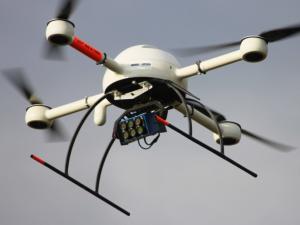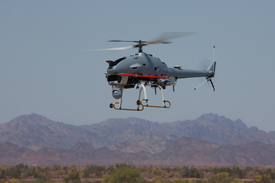
CONCERN is growing in the local film industry about the economic impact of the SA Civil Aviation Authority’s (SACAA) ban on unmanned aerial vehicles (UAVs) or camera drones frequently used by film-makers for action scenes and nature documentaries.
UAVs are aircraft that fly without a pilot and can be controlled remotely by someone on the ground, in another aircraft or by computer.
Earlier this month the SACAA urged people to refrain from using UAVs without approval from the authority.
The SACAA did not approve the use of camera drones as there are no regulations guiding its use. Anyone using these UAVs did so illegally, the SACAA said.
UAVs are used in the production of feature films particularly in action scenes, for tourism commercials and by nature conservationists to track the movement of rhinos.
Kabelo Ledwaba, from the SACAA said it had not given approval to any organisation to use camera drones in civil aviation airspace. Ledwaba said unmanned aircraft systems were relatively new in the civil aviation framework and that the SACAA and other regulators across the world were working to understand, define and integrate UAVs into the civil aviation sector.
“There is ongoing global research in this area to overcome this deficiency,” Lebwaba said.
Cape Town Film Commission chief executive Denis Lillie said the industry was concerned about the ban’s impact on the economy and job creation. Two filming permits had already been refused for shoots in Cape Town in recent weeks.
While companies apply to the city for filming permits, the city sends the application to the SACAA for approval when the use of drones is indicated.
“Clearly there are significant implications for the film industry. We have already had concern from a producer who did a nature documentary in Cape Town which airs internationally,” Lillie said.
He said they have been talking to the SACAA, the transport ministry and the city about the ban and how to regulate the use of the drones. Lillie said the process of developing guidelines for the use of the drones could only be finalised by the end of the year.
In the meantime they have asked that the SACAA adopt the policy for model aircraft and apply it to camera drones. This will mean putting restrictions in place such as, flying only under 120m, no flying within 4.2 nautical miles of an airport, no autopilot flying or night flying and no flying over public property.
“The ban will not only affect feature films but also tourism promotion agencies often look for aerial shots. South Africa runs the risk of losing production activities to other areas who approve the use of drones,” Lillie said.
Acting mayoral committee member for events, tourism and marketing Ian Neilson said the city was concerned about the ban. He said the city was not averse to the use of UAVs for filming, but all necessary approvals need to be in place. “The city’s disaster risk management centre is in contact with and awaiting direction from SACAA.”
http://www.iol.co.za/capetimes/film-industry-concerned-about-camera-drone-ban-1.1689174#.U3XvSvmSySo














